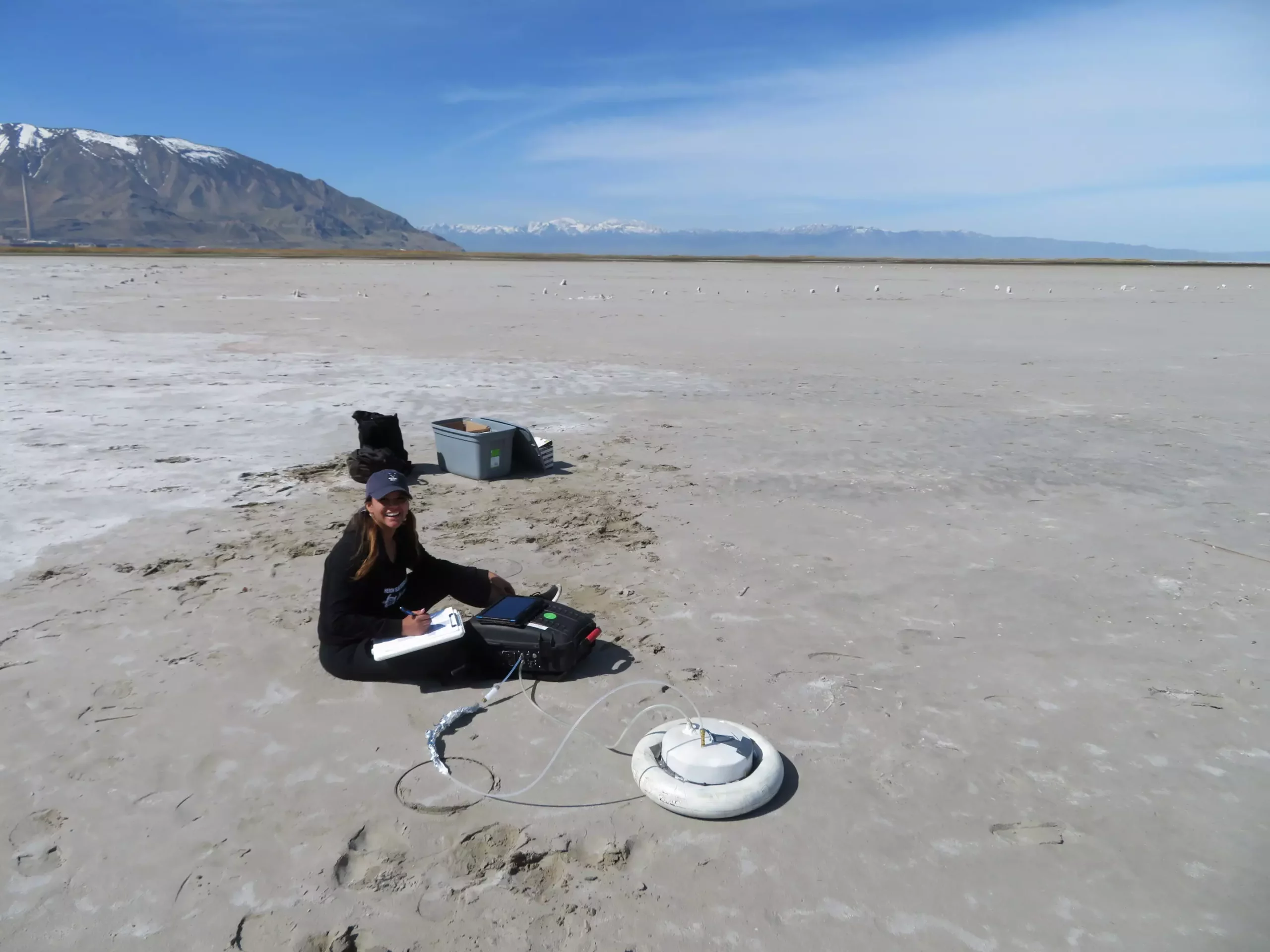The Great Salt Lake in Utah, once a vibrant ecosystem, has transformed into an alarming case study of how natural bodies of water can propel climate change. Research conducted by the Royal Ontario Museum intricately maps the repercussions of this drying lake bed, revealing a staggering release of 4.1 million tons of greenhouse gases in 2020 alone. This finding pinpoints an often-ignored contributor to anthropogenic climate disruption. The startling conclusion highlights an urgent need for climate advocates and policymakers to recognize the significance of desiccating lakes as both a source of greenhouse emissions and a natural feedback mechanism exacerbated by climate change.
What makes these findings particularly critical is the assertion by Soren Brothers, a leading researcher in the field, that the Great Salt Lake’s desiccation is not just a local environmental issue but a global concern that should be integrated into climate change strategies. The interconnectedness of our water systems and broader climate policies necessitates a re-evaluation of how we understand and respond to these processes.
The Impact of Human Activity on Natural Water Bodies
The Great Salt Lake’s water levels have historically fluctuated, influenced primarily by seasonal snowmelt from surrounding mountains. However, the grim reality is that human activities—ranging from agricultural practices to industrial usage—have steadily depleted this once-thriving ecosystem. The research poignantly underscores that the ongoing competition for freshwater resources among agriculture, industry, and urban needs directly contributes to the lake’s diminishing water levels. This situation mirrors trends in other iconic saline lakes, such as the nearly catastrophic shrinkage of the Aral Sea and Lake Urmia. Each instance not only spells trouble for biodiversity but also presents severe health risks for human populations as air quality deteriorates, exacerbated by pollutants released during the drying process.
The precarious balance of the Great Salt Lake and similar bodies of water serves as a stark reminder that localized issues can have expansive global repercussions. As these saline lakes shrink, the combination of evaporating saline water and sediment exposure releases potent greenhouse gases such as carbon dioxide and methane—a staggering realization given that methane is known to be 28 times more effective at trapping heat in the atmosphere compared to carbon dioxide.
Quantifying the Emissions: A New Perspective
With extensive field research, the team from the Royal Ontario Museum cataloged greenhouse gas emissions from the drying lake bed at various intervals throughout 2020. By employing portable greenhouse gas analyzers at multiple sites, they gathered valuable data on both carbon dioxide and methane emissions affected by rising temperatures. The meticulous process of site selection and measurement demonstrates a commitment to accurately depict the lake’s role in climate dynamics, revealing a problematic relationship between anthropogenic emissions and natural processes.
The significance of these findings is profound; the emissions resulting from the desiccated lake bed represent approximately a 7% increase in Utah’s total greenhouse gas output. This fact underscores the urgent need for regulatory frameworks that not only address emissions from industrial and residential sources but also consider the contributions from neglected environments like the Great Salt Lake.
Understanding Climate Feedback Loops
What increasingly sets the Great Salt Lake apart as a critical subject in climate discussions is its emerging role as a “novel driver of atmospheric warming.” The research highlights that mechanisms of climate feedback loops, particularly in arid regions, may be accelerating due to the ongoing desiccation of rivers and lakes. This creates an alarming scenario wherein environmental degradation and climate change fuel one another in a cycle that becomes increasingly difficult to reverse.
Beyond merely collecting data, the implications of this study push for a paradigm shift in how climate change feedback mechanisms are integrated into policy frameworks. Rather than viewing desiccation as a stand-alone issue, there’s a pressing need to adopt more holistic evaluations that encompass all potential climate impacts arising from drying ecosystems. By ignoring these links, policymaking risks falling into a trap of shortsightedness, which neglects the complexities of climate dynamics.
The drying Great Salt Lake serves as both a cautionary tale and a call to action. If left unaddressed, the implications are dire—not only for local ecosystems but also for the global climate. Addressing this acute yet overlooked crisis must become a priority, fostering innovative solutions that protect water resources while mitigating climate change risks. The challenges presented by the Great Salt Lake encapsulate the multifaceted nature of the climate crisis and demand immediate, coordinated responses that extend beyond local borders and resonate on a global scale.


Leave a Reply